Title : Particularities of pulmonary tuberculosis in young adults and elderly patients: A comparative study in the department of pulmonology at Rouïba hospital (Algiers)
Abstract:
Pulmonary tuberculosis remains prevalent in Algeria affecting both young adults and elderly individuals yet age may influence the clinical presentation, severity, diagnostic yield and outcomes of the disease. This study aimed to compare the epidemiological, clinical, radiological, microbiological and outcome profiles of elderly patients (≥65 years) and young adults (<65 years) hospitalized with pulmonary tuberculosis in our department. We conducted a retrospective comparative study including 177 patients admitted to the department of pulmonology at rouïba hospital between january 2023 and december 2024. Patients were divided into two groups according to age: young adults (<65 years, n=123) and elderly (≥65 years, n=54). The mean ages were 37.4 and 75.4 years respectively.
Comorbidities were significantly more frequent in the elderly group (90.7% vs 43.9%), mainly hypertension (50.0%) and diabetes mellitus (37.0%). Both groups were predominantly non-smokers (70.7% vs 75.9%) with biomass exposure observed only among the elderly (13.0%). Clinically general symptoms such as asthenia and weight loss were more common in the elderly (68.5%), while cough predominated among young adults (41.5%). Chest radiographs revealed nodular infiltrates in both groups (75.6% vs 77.7%) with unilateral involvement more frequent in young adults (61.0%) and bilateral diffuse lesions in the elderly (44.4%). Computed tomography showed a higher prevalence of the tree-in-bud pattern among elderly patients (67.4% vs 44.4%). Sputum smear positivity was comparable between groups (19.5% vs 18.5%) while gastric aspirate was more contributive in young adults (58.6% vs 47.1%) and bronchial aspiration more useful in the elderly (88.9% vs 64.3%).
Outcomes were favorable in both groups (97.6% vs 92.6%) though complications and one death occurred exclusively among elderly patients. These findings highlight the age-related variability in pulmonary tuberculosis underlining the need for tailored diagnostic strategies and age-appropriate management to ensure favorable outcomes.



